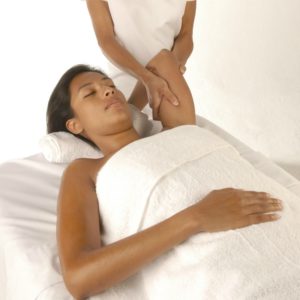This is a question that many young women in Rochester, NY have been facing more and more, and the question is yes there is treatment after plastic surgery. That treatment consists of wearing compression garments for 3-6 months, drainage tubes being removed, stitches being removed, multiple creams, pain pills, and manual lymph drainage. Treatment changes from doctor to doctor, and country to country.
Many women of Rochester, NY, from the ages of 20-50, have been going overseas to the Dominic Republic and Columbia to get plastic surgery of all kinds, the Brazilian Butt Lift, or BBL, has been a very popular augmentation. Many young women have turned to liposuction, tummy tucks, breast implants, breast lifts, breast reductions, muscle sculpting and the BBL to get the perfect shape that every woman wants.
Yes, plastic surgery has been around for years. Women and men have gone in for minor to major surgeries for as long as I can remember, but I have seen an increase in the last couple of years of in my profession as a Certified Lymphedema Therapist. I started my career working with breast cancer patients doing manual lymph drainage on women and men who ended up developing lymphedema due to their cancer treatments. But I have noticed a shift in my career as more and more women have traveled to the DR, or Columbia, have been being advised by their plastic surgeons to get Manual Lymph Drainage, or Lymphatic Drainage massage and scar tissue release.
I have also seen people who have gone down to Florida, NYC, Cleveland, and some of the larger cities have also been recommending a series of Manual Lymph Drainage treatments after surgery to help with the surgical swelling. I have seen the most aggressive treatments coming out of the DR, where for first 10 days you stay in a recovery home where you are taken care of by a nursing staff where they cook for you, do wound care and manual lymph drainage every day. When you go home they recommend that you get treatment 2-3 times week for 1-3 months depending on how severe the swelling is, and how tight the scar tissue becomes.
Now what I have also been seeing after those first 10 days and once they get to come home there is no one really keeping an eye on the healing process anymore. A lot of doctors in Rochester, NY will turn patients away because they don’t want to be liable for someone else’s work, which puts the patients in harm’s way. The possibility of infection is pretty high, especially with how much plastic surgery is done at one time in the DR and Columbia and with patients having to take out their own stitches and drainage tubes.
 Why then do women choose to go out of the country for plastic surgery? Well the answer is simple, it’s cheaper and you can get a lot more done at one time. In the United States, they are only allowed to remove 4 liters of fat, when in the DR there is no regulations. I have heard of 11 liters being removed at one time, but most women tell me they had 7-8 liters removed. They also can get tummy tucks, BBLs, and all over liposuction all at once, or breast implants and liposuction all over, or reductions and tummy tucks at the same time. Which in the states those are all separate surgeries which range $4000 or more a piece. When in the DR and Columbia there is usually a flat rate price of $5500 or somewhere in that range.
Why then do women choose to go out of the country for plastic surgery? Well the answer is simple, it’s cheaper and you can get a lot more done at one time. In the United States, they are only allowed to remove 4 liters of fat, when in the DR there is no regulations. I have heard of 11 liters being removed at one time, but most women tell me they had 7-8 liters removed. They also can get tummy tucks, BBLs, and all over liposuction all at once, or breast implants and liposuction all over, or reductions and tummy tucks at the same time. Which in the states those are all separate surgeries which range $4000 or more a piece. When in the DR and Columbia there is usually a flat rate price of $5500 or somewhere in that range.
Now with that being said, when these women come back home they are left to their own devices of figuring out what they are supposed to be doing. I am not saying that their surgeons don’t answer questions when they are contacted, because most of them do, but they don’t have the health care team right at their fingertips. Being educated beforehand on what to expect with the treatment is key. Understanding the protocols, restrictions and the healing process before going under the knife is something that should be done.
Doing your research, asking questions and being prepared is key in recovering quickly and safely. Speak with your primary care doctor about what you are going to be doing and see if they will treat you afterwards or find another doctor who is willing to make sure everything is healing properly. Next step is making sure that you have all of the essential compression pieces that you are going to need.
There are tons of different types of Faja’s and different types of back and ab boards and different foam pieces. Make sure that you ask your Surgeon what exactly they want you to wear, how long to wear it and why you have to wear it. Also, ask why you don’t have to wear a certain piece. The more you know the better, because each doctor has different protocols and different reasons for the recovery process the recommend. Make sure you buy multiple faja’s and a few different sizes from the plastic surgeon’s office. A lot of women get home and try ordering faja’s over the internet as the swelling starts to dissipate and have found it very difficult to get the right size and the right kind. They are also much more expensive in the states.
Now let’s get down to the nitty gritty and talk all about Manual Lymph Drainage (MLD). What is it? What is it supposed to do? Why is it beneficial after surgery? Is it painful? These are questions I get all the time. Let’s get to the most important question out of the way. Is it painful? No. MLD is a light massage that is designed to work with the lymphatic system. The lymphatic system has certain pathways that it travels which gets disturbed when any type of surgery is performed. Sometimes its temporary other times its permanent, it all depends on what was disturbed and what was removed.
The lymphatic system is split into “watersheds”. Each arm, each leg, the head, the abs, the back, the glutes, the breasts are all split into different sections, called watersheds, each section drains towards large groups of lymph nodes. When you are dealing with cancer, lymph nodes are typically removed to make sure that the cancer hasn’t spread. When we are dealing with liposuction and plastic surgery they do their best not to remove lymph nodes, but there is no guarantee. Even if lymph nodes are not removed they process is still damaging the lymphatic system and it takes time for the system to regrow and recover.
The lymphatic system is designed to move in a certain way, but when there is surgery it disrupts the flow and backs the system up. When the system is backed up the area swells this is where manual lymph drainage massage comes into play. What this involves is the therapist manually moving the lymph through a series of light pressure strokes away from the surgical area towards a nonaffected area, which is usually against the natural flow, but not always.
True Manual Lymph Drainage shouldn’t hurt. I have heard that over in the DR and Columbia that some therapists use metal tools and very deep pressure pushing the fluid towards the drainage tubing. This tends to scare women from getting more treatment in the states. They are always surprised that in the states the massage is light and that they truly feel a lot better after each session. As the swelling dissipates that’s when the therapist should start doing more and more of the myofascial release and scar tissue release to help the tissues from adhering down to the muscles and rib cage. This also helps with the healing process of the lymphatic system. The lymphatic system is right underneath the skin and when the tissues are adhered the lymph system can’t flow through the areas properly.
Understanding the lymphatic system is also very important especially when you are looking for a Certified Lymphedema Therapist. There are many Licensed Massage Therapists in Rochester, NY who offer manual lymph drainage who are not certified in lymphedema work. I am not saying that and LMT who isn’t certified doesn’t know what they are doing, but make sure you find out what kind of training they have gone through that qualifies them to be working with someone who has had plastic surgery and understands that they must be careful with backing up the system. I have had too many clients come on to my table who have gone to another therapist because they were a little bit cheaper in price who ended up causing more swelling, because they had no training on dealing with the lymphatic system.
Therapists can pick up DVD’s and learn what to do without having any hands-on experience. Normal MLD can be learned this way, but to be dealing with a damaged system, a more extensive course should be taken. So, when you are searching for a therapist ask them where they got trained, or go to the lymphedema training school’s websites and find a therapist near you.





